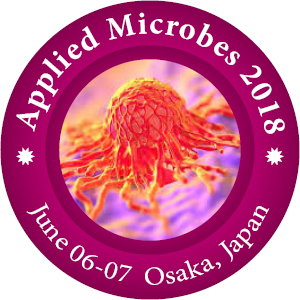Yeo Reum Park and Ka Young Son
Chonbuk National University, Rep. of Korea
Title: Rapid detection and concentration of human norovirus through lectins
Biography
Biography: Yeo Reum Park and Ka Young Son
Abstract
Statement of the Problem: Human norovirus (HuNov), which belongs to the Caliciviridae family, causes foodborne gastroenteritis outbreaks worldwide. This viral family is responsible for 90% of all nonbacterial infections. HuNoV produces symptoms of watery diarrhea, vomiting and dehydration that typically resolve within a few days, but can result in death in children and the elderly. Detection and diagnosis of HuNoV has been studied extensively, but the absence of in vivo and in vitro models in growing the virus hampers scientific understandings. Methodology & Theoretical Orientation: Biophysical studies including hydrogen/deuterium exchange (HDX) mass spectrometry and surface plasmon resonance (SPR) revealed that when the metal coordinated region of Con A, which spans Asp16 to His24, is converted to nine alanine residues (mCon AMCR), the affinity for HuNoV (GII.4) diminishes, demonstrating that this Ca2+ and Mn2+ coordinated region is responsible for the observed virus-protein interaction. Findings: We have developed a novel and highly sensitive ConA-conjugated polyacrylamide bead (ConA-column) that can be used for the prescreening of various food samples. This method offers many advantages over currently available methods, including a short concentration time. Norovirus can be detected in just 15 minutes using this technique. In addition, this method can be used over a wide range of pH values. Conclusion & Significance: This application was evaluated by measuring the recovery of different genotypes of GI and GII in HuNoV from different food matrices. Overall, this rapid and sensitive detection of HuNoV will aid in the prevention of virus transmission pathways and the method developed here may have applicability for other foodborne viral infections, especially HuNoV (GI and GII).

